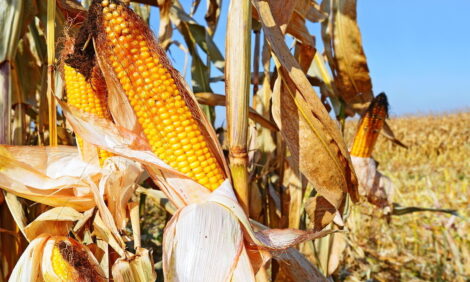



Healthy Gains Hit Quality Target
The first step in achieving goals is to set them. That’s why feedyard managers aim for the best live and harvested performance, and that means a few points better than last year. Carcass value is especially important to those who sell cattle on a grid, writes Certified Angus Beef.Producers may think efficiency comes from choosing genetics for feedlot performance over marbling and beef quality. But thesis research by Kansas State University Master’s student Marisa Hands-Kleysteuber and academic advisor, animal scientist Chris Reinhardt, says otherwise.
Data from 17,919 cattle fed at a southwest Kansas feedlot were evaluated for the paper, “Relationships between feedlot health, average daily gain and carcass traits of Angus steers.” Results show the highest quality grade cattle were also the highest gaining, regardless of disease status. They also suggest managing for a consistant end-point can be as influential as genetics.
“Even if cattle with similar genetics are fed for the same period of time, differences in carcass qualities will arise,” Reinhardt says.” Many times that is because of illnesses in certain animals.
Healthy animals tend to perform better, and the steers in this study provide an example. All marketed at an individually identified, fat-constant endpoint, those requiring no treatment for disease or illness graded 72% USDA Choice or Prime, compared to 59% for those treated two or more times. They weighed more coming in, and gained more with fewer days on feed to extend their advantages over steers that required treatment.
Reinhardt examined data on those steers that were never sick to look for correlations between average daily gain and quality grade because earlier work has noted that higher gaining cattle tend to grade better. This study found nothing to dispute that, and noted, “performance dramatically dropped for those cattle that were ungraded [Standard or No-Roll].”
On the other hand, the more times cattle were treated, the lower performance in the yard and in carcass value; ungraded cattle turned out to be those that required treatment just about twice as often as other cattle.
Sickness usually means a temporary setback. While cattle showing morbidity deposit less external and intramuscular fat, feeding to the same fat-constant endpoint as healthy cattle cuts down on those differences in marbling scores and performance. Of course, it takes more days on feed in a setting where clearly time is money.
“The relationship between Yield Grade (YG) and Quality Grade in treated cattle is actually greater than in non-treated cattle,” the report states. “Allowed to reach an adequate degree of finish, marbling should also follow.”
Regardless of health, the study suggested all cattle optimize marbling by feeding them with the goal of achieving YG 3 (See tables and full study on page 4 of the 2012 KSU Cattlemen’s Day Report at http://www.ksre.ksu.edu/library/lvstk2/srp1065.pdf).
Steers reaching that level of cutability made 16.1 percentage points more Choice and Prime as compared to those steers falling within the range of YG 1 or 2. Premium Choice carcasses were increased by 10.3 points in the same comparison.
“It pays to keep cattle healthy, yes. But these results also tell us if we want to raise high-quality beef, we do not need to bypass performance genetics for high-marbling traits,” Reinhardt says. “We can select a combination of both.”
Management counts, certainly. The research report concludes producers who “reduce opportunities for nutritional stress (e.g. nutrient restriction, health challenges) and ensure their cattle are fed to their target fat content endpoint … will more consistently achieve both excellent performance and quality grade [goals].”
March 2012



